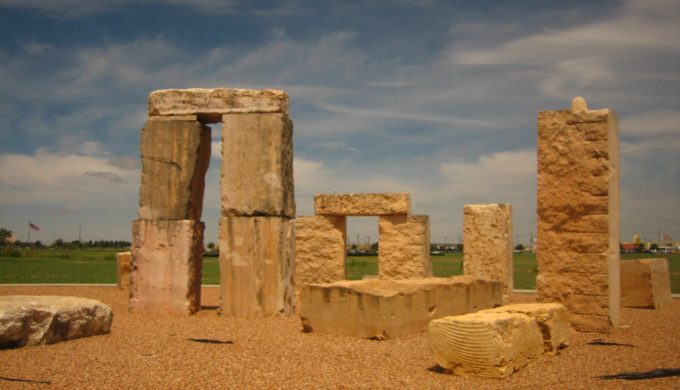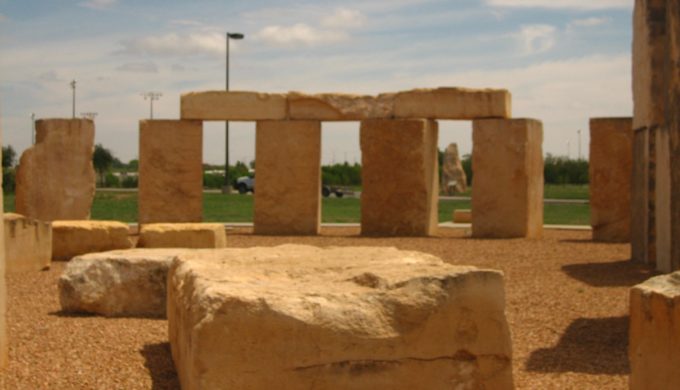On the edge of the University of Texas of the Permian Basin Campus (UTPB), sits Stonehenge. Not the original from England, of course, and not even the first one to be built in Texas (the first one constructed in the Lone Star State is situated near Kerrville, in the Texas Hill Country.) Rather, here stands the second replica, constructed in West Texas, amongst the prairie dogs and oil rigs, where it doesn’t appear to be out of place in the least.
Things to Do
West Texas Stonehenge: Odessa Gives Us Something More to Think About

Photo: Wikimedia
Not as mysterious as the original, and following suit with those that are similarly scattered through the U.S. (Washington, Montana, Missouri, and more), this second Texas Stonehenge was the product of three individuals. Chairman of UTPB’s Humanities and Fine Arts Dept., Chris Stanley, had long required his art students to construct models of Stonehenge. Friend and retired contractor, Dick Gillham, had been a longtime supporter of public art, and was always on the lookout for a project that would improve Odessa’s cultural landscape. One day, they were looking at a bunch of rocks that students had arranged to roughly resemble Stonehenge, when the thought crossed Chris’ mind that it would be nice to have a real one. The third individual to help make things happen was Stonehenge fan and limestone quarry owner, Connie Edwards. In 2002, the quarry had sold the stones to the folks in Montana that were building their own Stonehenge. He believed it to be a great idea and offered to donate the stones for the project. As a result, the three of them got approval from the University of Texas and planned to position the stones in the exact fashion as the original in England, on the UTPB’s campus.

Photo: Wikimedia
The original Stonehenge in England is commonly believed to be a type of astronomical calendar, although no one is really sure it’s true purpose, or why it was constructed on Salisbury Plain all those centuries ago. Funds were raised by Dick to have the stones moved and placed effectively. To ensure similarity in Odessa to the original, a surveyor was brought in to study the model from top to bottom and from morning through night in order to ensure the stones were positioned properly. Having the same diameter as the one in England, the circle of Odessa stones was constructed at 70 percent the original height. And to save money on the project, this West Texas version uses two stones stacked on top of each other for each vertical piece, allowing heavy-equipment operators to maneuver stones weighing 20,000-40,000 pounds, as opposed to 90,000.

Photo: Wikimedia
For testing the time positioning (if it were to be the same as England’s version), June 21, 2004, (Summer Solstice) was selected to ensure that the exact arch through which the sun was meant to shine was correctly placed on the model’s northeast side. And it worked perfectly. Not only that, but the stones that were donated by Connie’s quarry contain numerous fossil imprints from the Cretaceous period, for which much of Texas had been underwater – an added draw for locals and tourists alike. Mathematics students continue to study the project and wildlife continue to make the Odessa Stonehenge their home. First and foremost, the people continue to come and mill about, relax, hang out, and perhaps meet up with other people, which makes you kind of wonder if that might have been a reason the original was constructed as well. Something to think about, and visit, in Odessa, Texas.


